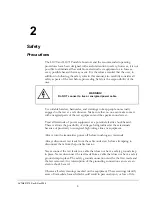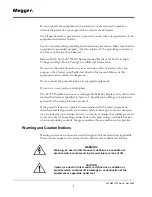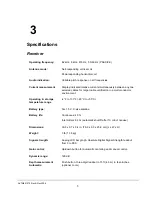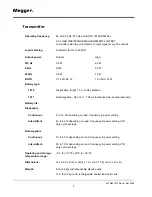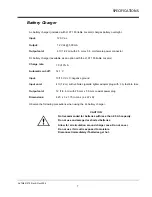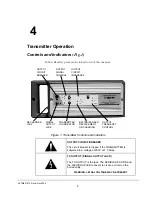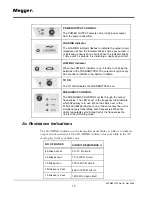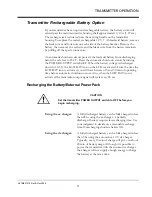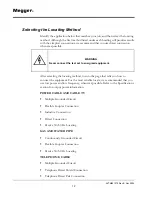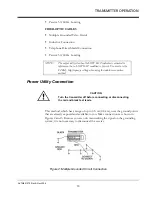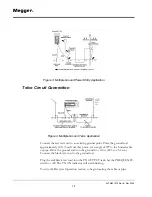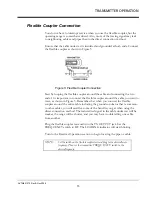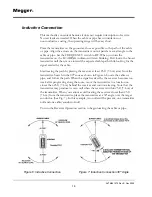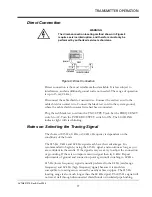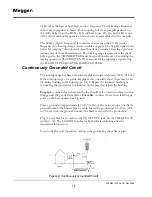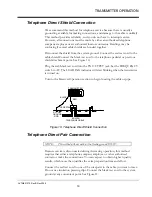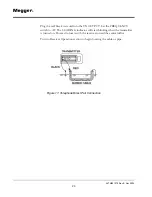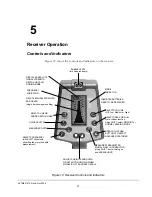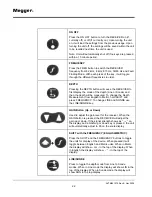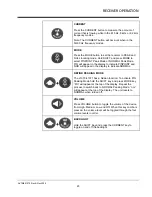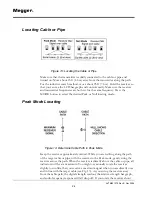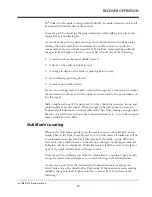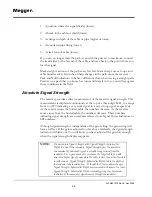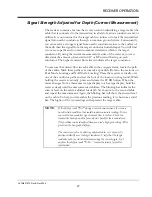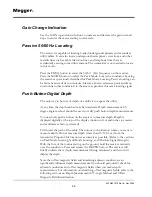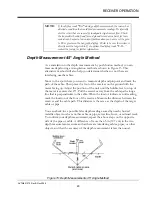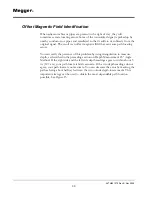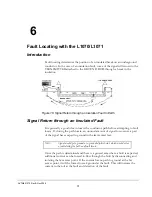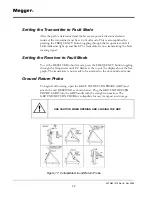
TRANSMITTER OPERATION
AVTM651070 Rev B Nov 2006
17
Direct Connection
F
WARNING
The direct-connection locating method shown in Figure 8
requires service interruption, and therefore must only be
performed by authorized service technicians.
Figure 8: Direct Connection
Direct connection is the most reliable method available. It is less subject to
interference, and an additional ground rod is not needed. The range of operation
is up to 15 mi (24 km).
Disconnect the cable shield or neutral wire. Connect the red test cord to the
cable shield or neutral wire. Connect the black test cord to the system ground,
where the cable shield or neutral wire had been connected.
Plug the red/black test cord into the TX OUTPUT jack. Set the FREQUENCY
switch to AF. Turn the POWER OUTPUT switch to ON. The LOADING
indicator light will start blinking.
Notes on Selecting the Tracing Signal
The choice of 815 Hz, 8 kHz or 82 kHz Frequency is dependent on the
conditions of the locate.
The 815 Hz, 8 kHz and 82 kHz signals each have their advantages. It is
recommended to begin by using the 815 Hz signal, and continue as long as you
are confident in the results. If the signal is very weak try to adjust the connection
or grounding. If there is no improvement in signal then try 8 kHz. Repeat
adjustments of ground and connection point again until switching to 82 kHz.
815 Hz (lower frequency) signal is usually preferred to the 8 kHz (mid-range
frequency) and 82 kHz (high frequency) signal, because it is much less
susceptible to locating errors caused by nearby cables or pipes. The 815 Hz
locating range is also much longer than the 82 kHz signal. The 815 Hz signal will
not travel well through disconnected shield bonds or insulated pipe bushing.
Summary of Contents for L1070
Page 2: ...L1070 and L1071 Portable Locator Instruction Manual...
Page 4: ......
Page 8: ...AVTM651070 Rev B Nov 2006 iv M...

